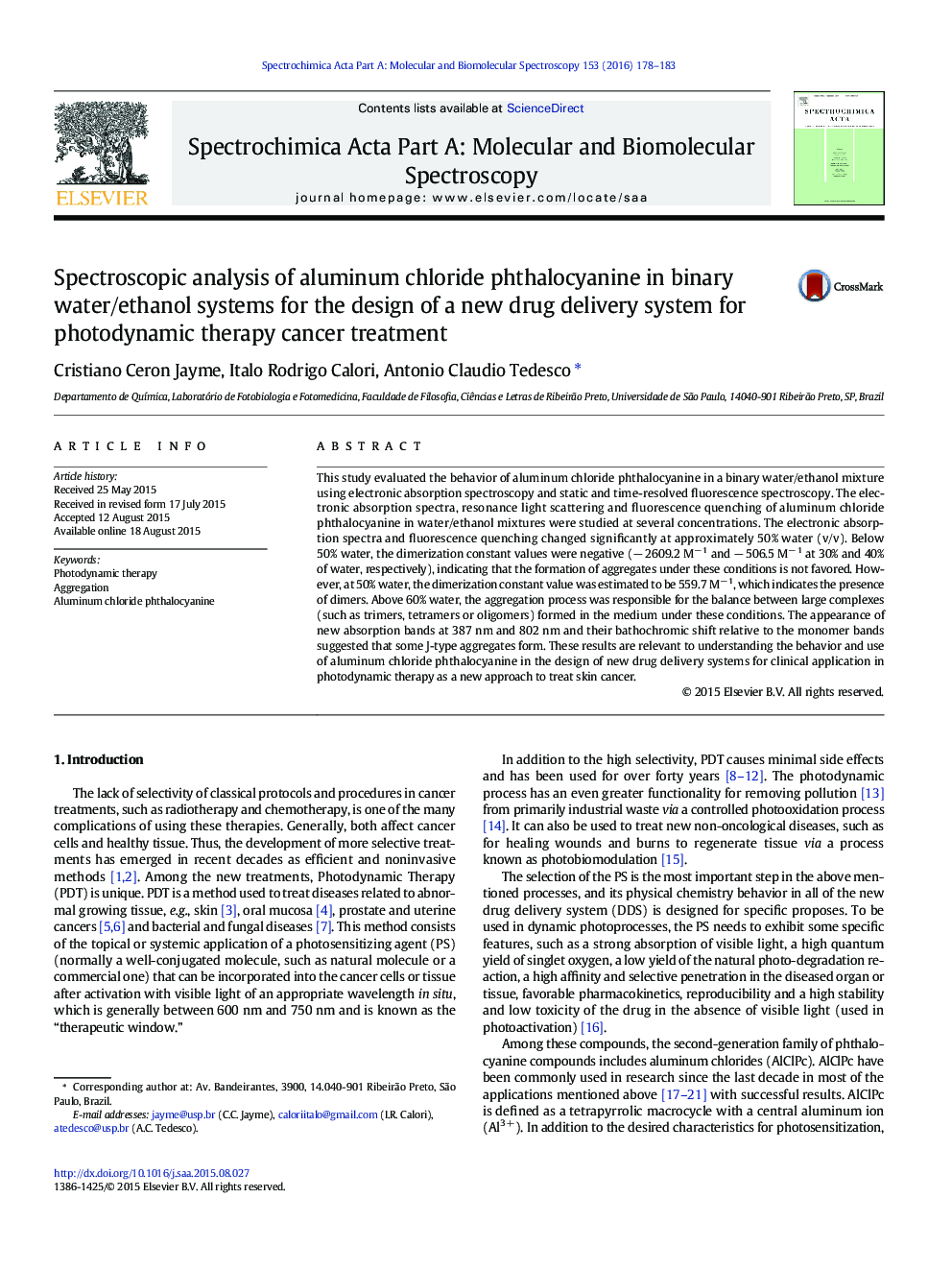| Article ID | Journal | Published Year | Pages | File Type |
|---|---|---|---|---|
| 1228714 | Spectrochimica Acta Part A: Molecular and Biomolecular Spectroscopy | 2016 | 6 Pages |
•The behavior of aluminum chloride phthalocyanine in water/ethanol mix was studied.•The fluorescence lifetime of 6.24 ns in ethanol is related to its monomeric form.•A second fluorescence lifetime about 1.5 ns at 50% of water is related to dimer.•The bathochromic shift in S band absorption at 60% of water hints at aggregate J-type.•The results have a direct relevance on design of new drug delivery systems for PDT.
This study evaluated the behavior of aluminum chloride phthalocyanine in a binary water/ethanol mixture using electronic absorption spectroscopy and static and time-resolved fluorescence spectroscopy. The electronic absorption spectra, resonance light scattering and fluorescence quenching of aluminum chloride phthalocyanine in water/ethanol mixtures were studied at several concentrations. The electronic absorption spectra and fluorescence quenching changed significantly at approximately 50% water (v/v). Below 50% water, the dimerization constant values were negative (− 2609.2 M− 1 and − 506.5 M− 1 at 30% and 40% of water, respectively), indicating that the formation of aggregates under these conditions is not favored. However, at 50% water, the dimerization constant value was estimated to be 559.7 M− 1, which indicates the presence of dimers. Above 60% water, the aggregation process was responsible for the balance between large complexes (such as trimers, tetramers or oligomers) formed in the medium under these conditions. The appearance of new absorption bands at 387 nm and 802 nm and their bathochromic shift relative to the monomer bands suggested that some J-type aggregates form. These results are relevant to understanding the behavior and use of aluminum chloride phthalocyanine in the design of new drug delivery systems for clinical application in photodynamic therapy as a new approach to treat skin cancer.
Graphical abstractFigure optionsDownload full-size imageDownload as PowerPoint slide
